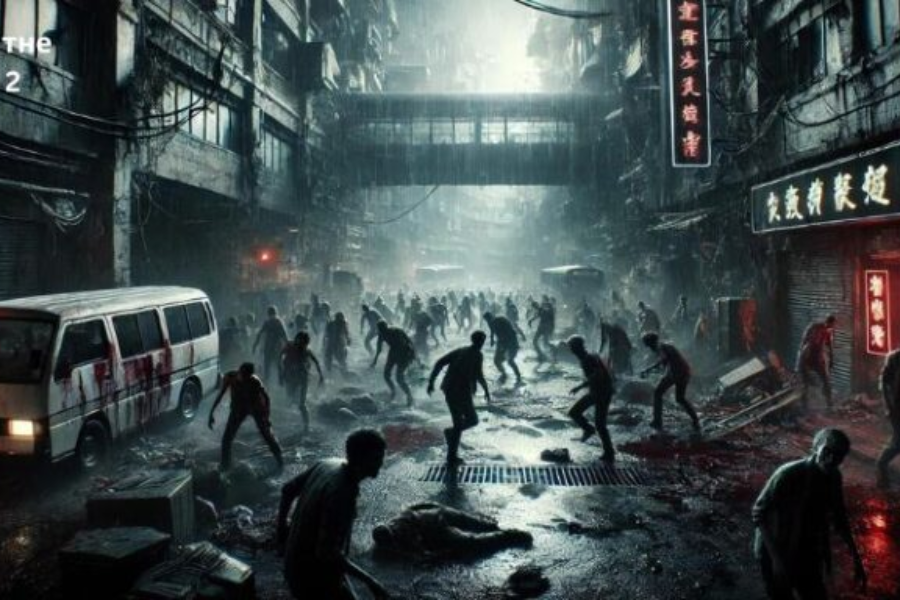Exploring luѕт оf тне dеаd 2: A Deep Dive into the Cult Classic
“luѕт оf тне dеаd 2” is a captivating entry in the world of Japanese exploitation cinema. Directed by Naoyuki Tomomatsu, this film serves as the second installment in the “Rape Zombie: Lust of the Dead” series, continuing the narrative established in the first movie. It uniquely blends horror, eroticism, and a post-apocalyptic setting. This article delves into various aspects of “luѕт оf тне dеаd 2,” including its plot, characters, themes, and its significance within the genre.
The Plot Unfolds
The narrative resumes from where the first film concluded, set in a Japan plagued by a terrifying pandemic. This virus transforms men into zombie-like beings consumed by an uncontrollable lust. This chilling premise paves the way for a series of harrowing and grotesque events. The story focuses on survivors, primarily women, who must navigate this perilous new reality while seeking ways to survive against the monstrous threat.
In “luѕт оf тне dеаd 2,” attention shifts to a group of women united in their quest for safety and stability. The film depicts their struggles and various strategies to fend off the infected men, creating a palpable tension as the characters face danger from both the zombies and an increasingly authoritarian government attempting to control the outbreak.
Characters and Their Journeys
The characters in “luѕт оf тне dеаd 2” are varied and complex, each with distinct backstories, motivations, and personal challenges to overcome. The protagonist, Nozomi, emerges as a courageous and resourceful leader, experiencing significant growth from a frightened survivor to a determined fighter—one of the film’s central arcs.
Other prominent characters include Kanae, a former nurse leveraging her medical expertise to assist the group, and Maki, a martial artist whose combat skills prove essential. The interactions among these characters enrich the narrative, emphasizing themes of solidarity, resilience, and the enduring strength of the human spirit, even in dire circumstances.
Themes and Symbolism
“luѕт оf тне dеаd 2” transcends being a mere horror film with erotic elements; it serves as a commentary on societal issues and human nature. The film explores themes such as the dehumanizing effects of unchecked desire, societal collapse, and the struggle for power in times of crisis. The virus in the movie symbolizes various forms of social decay, including misogyny and authoritarianism.
The portrayal of women uniting for survival critiques patriarchal structures, underscoring the significance of female solidarity and empowerment in the face of male aggression. The film raises poignant questions about humanity, examining whether individuals can maintain their morality and compassion when pushed to their limits.
Visual Style and Cinematic Techniques
Naoyuki Tomomatsu employs a distinctive visual approach in “luѕт оf тне dеаd 2.” The film combines stark, gritty realism with surreal, dreamlike sequences. The effective use of practical effects and makeup enhances the visceral impact of the zombie encounters. The cinematography often highlights the claustrophobic nature of the characters’ environment, amplifying the sense of impending doom.
The film’s pacing is relentless, offering few moments of reprieve for either the characters or the audience. This constant tension keeps viewers on edge, mirroring the characters’ perpetual anxiety. The soundtrack, a mixture of eerie ambient sounds and jarring musical cues, intensifies the horror elements.
Reception and Legacy
“luѕт оf тне dеаd 2” has received a mixed reception. Critics and viewers have debated its merits, with some praising its boldness and others criticizing its explicit content. Despite these divided opinions, the film has achieved cult status, particularly among aficionados of Japanese exploitation cinema. Its unique blend of horror, eroticism, and social commentary positions it as a memorable contribution to the genre.
The film’s legacy is reflected in its influence on subsequent works within the exploitation and horror genres. It has sparked discussions surrounding the representation of women in horror, the use of explicit content to convey deeper meanings, and the role of genre cinema in mirroring societal anxieties.
Conclusion
“luѕт оf тне dеаd 2” stands out as a significant work in Japanese exploitation cinema. Through its combination of horror, eroticism, and social commentary, it offers a distinct viewing experience that challenges conventional genre boundaries. The film’s exploration of themes such as societal decay, female empowerment, and the dehumanizing effects of unchecked desire enriches its narrative, elevating it beyond a simple horror movie. Despite mixed reviews, its cult status and influence on future works attest to its lasting impact. Whether regarded as a bold critique or an exploitative thrill ride, “luѕт оf тне dеаd 2” undeniably leaves a profound impression on its audience.
FAQs
What is the main premise of “luѕт оf тне dеаd 2”?
“luѕт оf тне dеаd 2” unfolds in a post-apocalyptic Japan where a virus transforms men into lust-driven zombie-like creatures. The film follows a group of women as they navigate this perilous landscape, striving to survive against the infected and an oppressive government.
Who are the main characters in the film?
The central characters include Nozomi, a strong and resourceful leader; Kanae, a former nurse; and Maki, a skilled martial artist. Each character contributes unique strengths to the group, and their relationships add depth to the story.
What themes are explored in “luѕт оf тне dеаd 2”?
The film delves into themes such as the dehumanizing effects of unchecked desire, societal collapse, female solidarity, and empowerment. It critiques patriarchal structures and poses questions about the essence of humanity in times of crisis.
How has the film been received by audiences and critics?
“luѕт оf тне dеаd 2” has garnered mixed reviews. While some praise its boldness and social commentary, others criticize its explicit content. Nonetheless, it has attained cult status, particularly among enthusiasts of Japanese exploitation cinema.
What is the visual style of the film like?
The film blends gritty realism with surreal sequences, employing practical effects and makeup to enhance the visceral impact of the zombie encounters. The cinematography and soundtrack contribute to the constant tension and sense of looming dread.






